In December, there are not so many flowers in bloom along the pathways of Hvar, but a few linger on from autumn because of the mild temperatures, while others are getting an early start on spring! For this winter edition, I’ve expanded the scope to include seeds, fruits and leaves as they make quite the splash of colour on our walks!

Here’s my winter reference table, with the usual health warning about my ability to identify plants correctly! So many can be very similar, especially the myriad varieties of small yellow flowers!! Click on the images for a bigger picture, and links go to wikipedia or plantea (Croatian) to find out more.
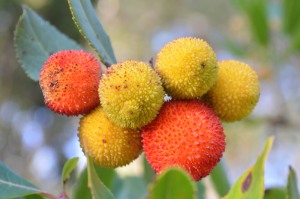
 Arisarum vulgare Friar’s cowl Croatian not known |
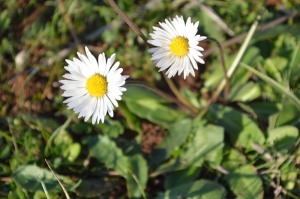 Bellis perennis Common daisy (older name bruisewort) Tratinčica |
 Calendula arvensis Field marigold Neven (calendula officinalis) |
 Citrus sinensis Orange Mandarina Not a native species, but all kinds of citrus trees grow really well on Hvar!
|
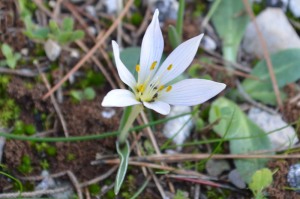 Crocus biflorus Silvery crocus Dvocvjetni Šafran |
 Diplotaxis tenuifolia Perennial wall-rocket Uskolisni dvoredac |
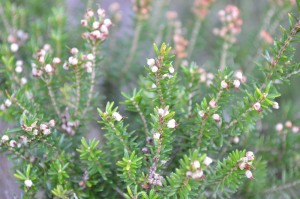 Erica manipuliflora (Winter-flowering) heather Primorski vrijes |
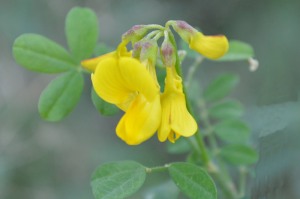 Hippocrepus comosa Horseshoe vetch Croatian not known |
 Iberis sempervirens Evergreen candytuft Vazdazelena ognjica |
 Ipomoea purpurea Purple Morning Glory Ukrasni slak |
 Juniperus communis Common juniper Borovica / Smrča |
 Juniperus phoenicea Phoenician juniper / Arar Gluhač / Gluha smrča The Croatian name translates as deaf juniper, implying this is not the common version.
|
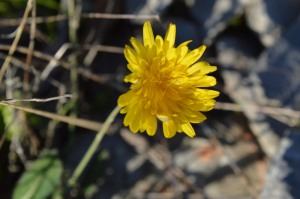 Leontodon Hawkbit (not to be confused with dandelion) |
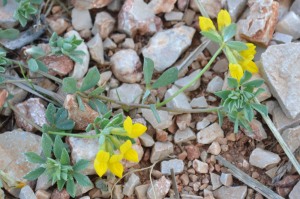 Lotus corniculatus Bird’s Foot Trefoil Svinđuša |
 Opuntia Opuntia / Prickly pear Opuncija / indijska smokva Introduced from the Americas
|
 Pinus halepensis Aleppo pine Alepski bor |
 Pittosporum tobira Mock orange Pitospor Import from Japan, China and the Far East
|
 Quercus ilex Holm oak Hrast crnika / česmina |
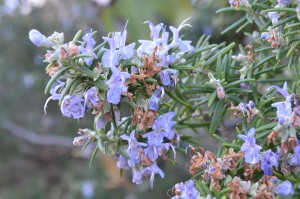 Rosmarinus officinalis Rosemary Ružmarin |
 Sedum Stonecrop Bijeli žednjak No flowers at this time of year, but very pretty amongst the rocks!
|
 Silene vulgaris Bladder Campion Pušina |
 Solanum nigrum Black nightshade Crna pomoćnica |
 Taraxacum Dandelion Maslačak |
 Vaccinium myrtillus Bilberry / blaeberry* Borovnica ** |
 Viburnum tinus Laurustinus Lemprika |
 Yucca Yucca Juka Another import from the Americas
|
* Not a misprint, blaeberry is the Scots spelling (see https://sco.wikipedia.org/wiki/Blaeberry). Blueberries are from a related but specifically American plant. Bilberries or blaeberries are a European shrub/tree. Berries look and taste very similar apparently but I like to assume any bushes growing wild on Hvar are the native variety unless they're obvious imports! I have to admit this was actually news to me as I was researching the plants, but luckily Zdravko knew the difference.
** Of course the other thing we know about Borovnica is the very tasty liqueur that is made from them! For a recipe in Croatian, click here.
© Marion Podolski 2017




















































































































































































































